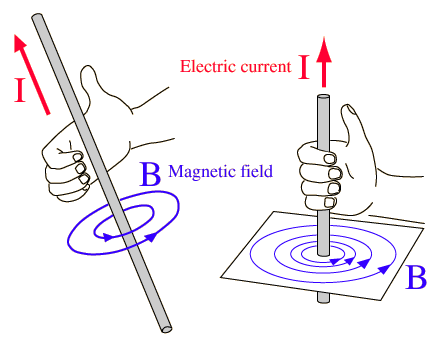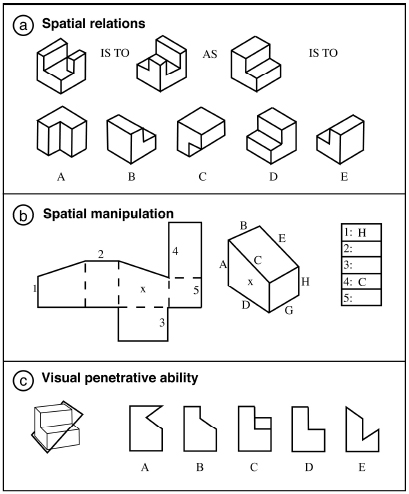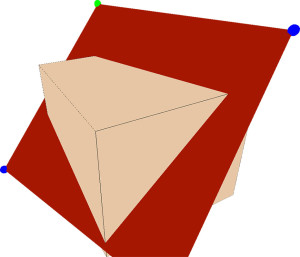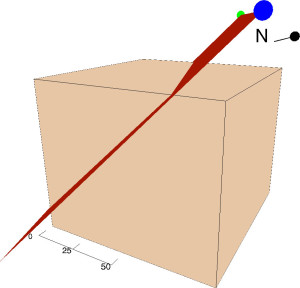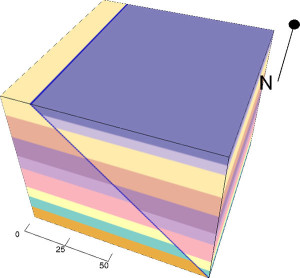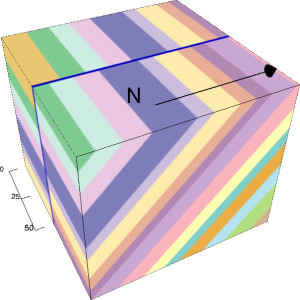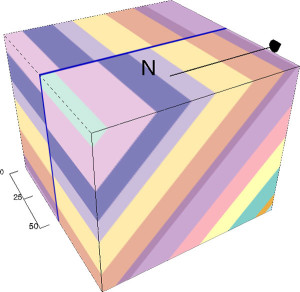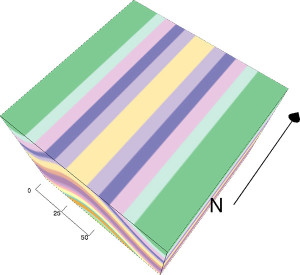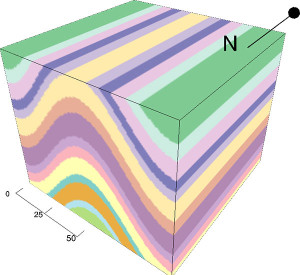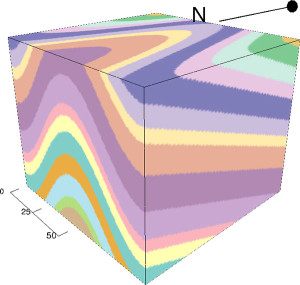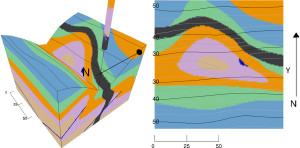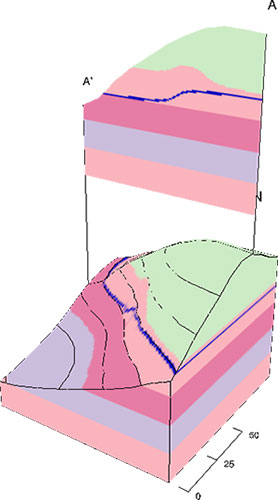There are thousands of research reports written on 2D and 3D thinking skills on the internet. You can read them all, but I do not believe absorbing those highly academic reports would make any difference for improving your ability in spatial visualization. The main message in all those reports is; the ability to understand 3D structures are very important to Science and Engineering students.
If you were exposed to activities which force you to think in 3D, such as building blocks/Lego®, then you already have the basic knowledge on spatial visualization. Even if you were not familiar with such activities, as a Science undergraduate student, I am sure you have felt the pressure to think in 3D in some of your classes. I was extremely unconformable in my Structural Geology labs not because I do not understand the concepts in Geology, but I could not get my head wrap around the idea of having different views (interpretations) on a single structure. If you feel that you are “stuck” at thinking in 2D or 3D, do not give up because spatial visualization skills can be improved through 3D and 2D activities. One thing I have to make clear; I DO believe that spatial skills can be improved with experience, so it takes time.
Why university students may find it hard…
There are million reasons why, but some of the most common issues would be;
- Prejudice negative attitude towards any subject that involves Math and Physics.
- Coming in to Geology and assume it is more of an Art than a Science.
- Underdeveloped critical thinking skills.
- Preconceived notion about teaching styles of academic institutions.
- Not putting enough time into the subject outside of the regular classes and labs.
- Get it done attitude with no interest in learning the concepts.
- Inability or inexperience in breaking down complex problems into smaller sections.
- Learning or physical disabilities which hinders the ability to demonstrate full potential on exams.
- Lack of guidance on how to improve critical thinking and spatial visualization skills.
I am not going to address them all. I am not qualified to do so and it takes a lot of my time to do research using academic databases (they are so unlike simple Google Search!). Today I am going to take on the last point, the guidance on how improve critical thinking and spatial visualization skills.
Math helps, but it depends…
I had talked to a lot of students at University of Calgary who had enrolled for Winter 2013 academic session. They think the Structural Geology class is hard even before the labs were started. The overwhelming response was the fear of 3D spatial visualization. Some students just do not even want to give it a try while others, including myself, gave up after the first few tries.
It should not be that hard considering some of us were able to score extremely high averages in Physics, Chemistry and Biology in high school (and the University). The problem I think is that we lacks the ability to translate our theoretical thinking into more practical visualization. For example, in the figure below, a current I flow through a straight wire has a magnetic field, B wrapped around the wire. But the magnetic field itself has a direction.
The term “Right Hand Rule” is used in numerous applications of science. In Geology, we use our Right Hand Rule (of different kind) to find the strike and dip directions of a feature.
Here is the surprise! Even with some difficulty, most students would be able to understand the Right Hand Rule in Physics, but a large portion of the same group would struggle to understand the Right Hand Rule in Geology. The poor performance in our advance/intermediate Geology classes does not always reflect our abilities. Some Professors and TAs (Teachers Assistants; Graduate Students) told me that they cannot explain why we seems to be getting dumber as we progressed in our degree.
I believe Mathematics and Physics are the foundation for any type of science. Regardless which specialization you choose, the skills you learn in those two subjects can make the difference between being a good Geology student and being a great one. If you are a high school student, please seriously consider taking all three sciences all the way to Grade 12.
Pundits on childhood learning
New studies shows that these type of skills are not improved due to student’s ability to do well in math and science, but rather the opposite. Children who are exposed to critical 3D and 2D thinking will most likely excel in Science and Engineering than those who did not 1. Scientists agree that special thinking, specially orientation, is a skill which obviously can be improved. But like languages, once the mold has been created it will be bit difficult to retrain the brain. This is I think it is so impotent for Kindergarten and Elementary school educational system to include 3D and 2D activities. Not only these activities could help the future instructors of these children, but also can spur their interest in science.
In 2012, a company had created (by Debbie Sterling, an Engineer herself) a toy set for girls called Goldie Blox2. The primary goal was to introduce 3D spatial visualization skills to children so that when they grow up, these young women will be interested in Engineering. I do not have evidence on the effectiveness of the Goldie Blox, but considering all the other “pundits” observations on early development of spatial skills, I am sure it is (probably) would be a success.
3D thinking for Geologists
Each and every person have their own way of improving skills. What is common to all of us is the final goal; robust interpenetration of subsurface Geologic features using deductive reasoning. There are three major components to spatial visualization;
- Spatial Relations; is the ability to mentally rotate an object on an axis3. Almost all Geologic features have undergone some form of rotation, even if it is as small as few degrees. I found most of the natural features have more than one rotational axis.
- Spatial Manipulation; is the ability to mentally manipulate an image into variety of arrangements. The deformation history and mechanisms in Structural Geology is based on the deductive reasoning of spatial manipulation. A Geologist should be able to determine the unreformed state of materials based on the stress and strain indicators of the present state4.
- Visual Penetrative Ability; is building a mental image of what is inside of an object using educated guesses and visible relationships. This is very important for Field Geologists. During my first field school I was forced to think inside the box when we analyzed the major folding event in Grotto Canyon in Canmore, AB. It is highly impractical for a Geologist to physically dig kilometers of hard rock and sediments to collect direct data even in small scale Geologic events5.
Big picture
All of the following figures (diagrams) were created using the web application developed by a University of Calgary Graduate Student6. Click on the image to view the original high resolution file.
You can improve your 3D spatial visualization skills by breaking down the large Geologic problems in to small pieces. I used the following approach. You may modify it to fit your learning styles.
1. Read and understand: The time you take to read the background of the Geologic feature / area in question depends on your current abilities in 3D thinking. Take your time to read as many materials as it needed even if it seems a waste of time (trust me, it is not a waste).
2. Starting out: Do not jump into complex problems with multiple Geologic features. Instead choose a simple concept. Just because something is simple, it does not mean you won’t be exposed to the major components of spatial visualization. The following figures show a flat plain cutting across a 3D block.
It tells you that the plain is not intersecting the block parallel to the North-South direction. In other words, it has a strike! To be exact, the strike is 160-degrees, but regardless of the exact value, you should be able to deduce it has a non-zero strike by just looking at it.
What did we cover so far in this simple example? We covered spacial relation and penetration.
3. Add Geologic layers: We can now replace the plain 3D block above with something more practice; a layered rock unit. For this example, it is still a perfect cube with perfectly horizontal layers. Can you visualize the layers in different orientations?
4. Dipping with a fault: The Geologic layers are no longer horizontal. Yes, they are dipping, but do you notice anything special about them?
5. Geologic manipulation: Finally now we have figures with somewhat complex deformations. They are all examples of anticlines, so to me they are not that complex at all.
This highlights a very important difficulty in 3D thinking. How do you know, your version of the story is right? The fact is, you do not. In the real world Geology, we use “quality of data assessments” to determine the probability of error. There are many different software like GeoScout, Golden Surfer, IHS Kingdom and many more to analyze the quality of data. While I love to talk about Computer Science side of Geology, I would leave that for another article (hint: it’s coming up!). The take home message is that quality of data is more impotent in Geology than the quantity of data.
The layer thickness is almost the same, if not at least the volume of each layer had not changed. The following side view of the exact same block shows an anticline. The block had been subjected to differential stress. Can you deduce the hinge-line? Is it plunging in any direction?
The following figure is an example of a plunging anticline. It is recognizable from the North-ward dipping beds parallel to the hinge line (or zone).
By simply manipulating the spatial relations, we were able to significantly improve our quality of data (hence improving the spatial visualization as well).

I wrote a separate article on the 3D Geometry of Folds with much more vigorous details on fold anatomy. I recommend reading it for all Geology students.
6. Putting all three together: This is an advanced example that will test your abilities in all three major components to spatial visualization. The following image has two views combined as a single figure. On the left hand side, the 3D block image and on the right hand side, a map view of the same area. It is in a valley (but no contour lines are shown), it has two major folding events, two faults and non-zero strikes and dips for all the Geologic features.

Now you have the background knowledge, do not forget to try out Visible Geology. There is a lot more to spatial visualization in Geology than what I talked about there. For example, how about cross sections?
References
1. Toddler Spatial Knowledge Boosts Understanding of Numbers
2. Goldie Blox
3. Shepard and Cooper, 1982 AND Shepard and Metzler, 1970
4. Guay (1976) and Ekstrom et al. (1976)
5. Kali and Orion, 1996

